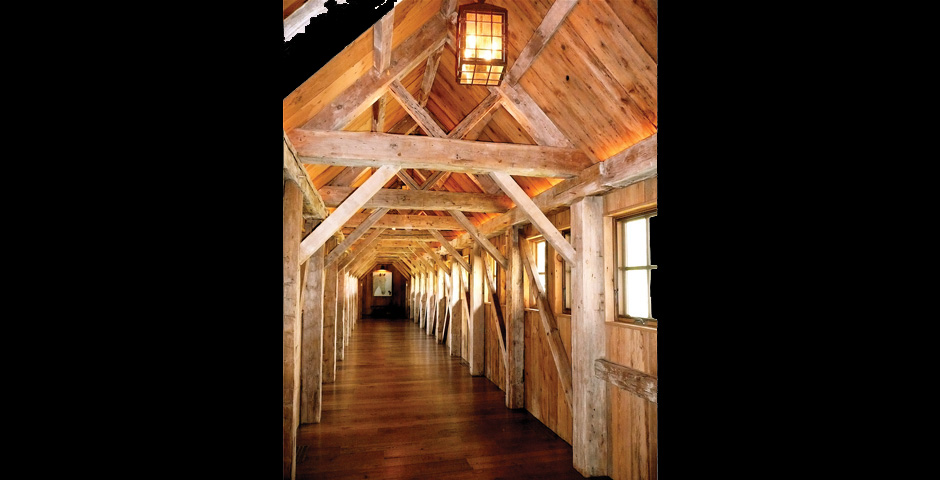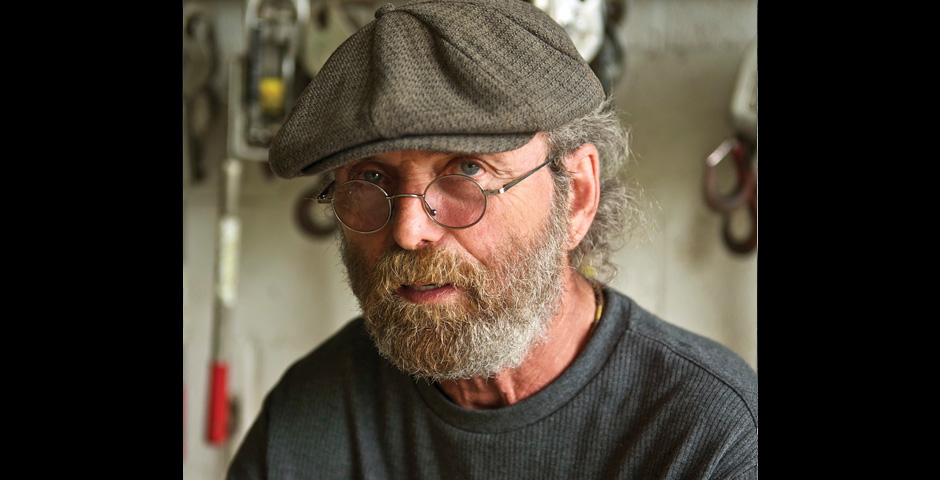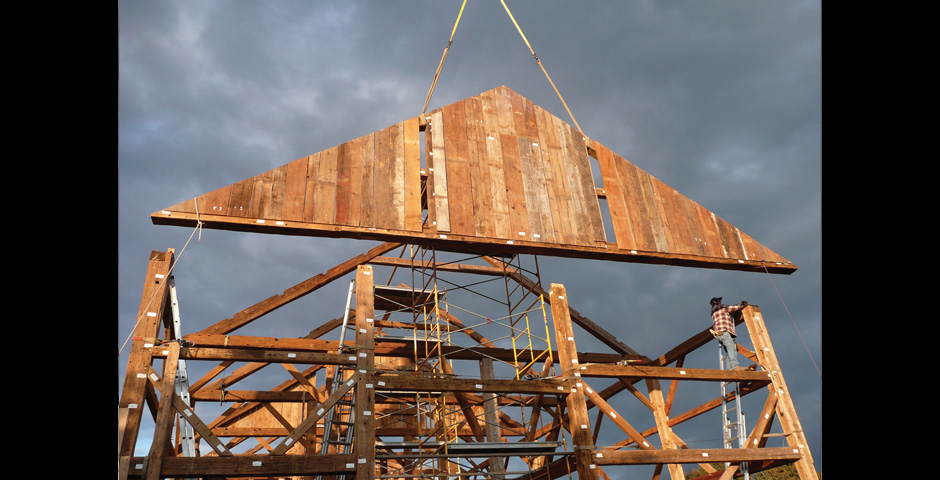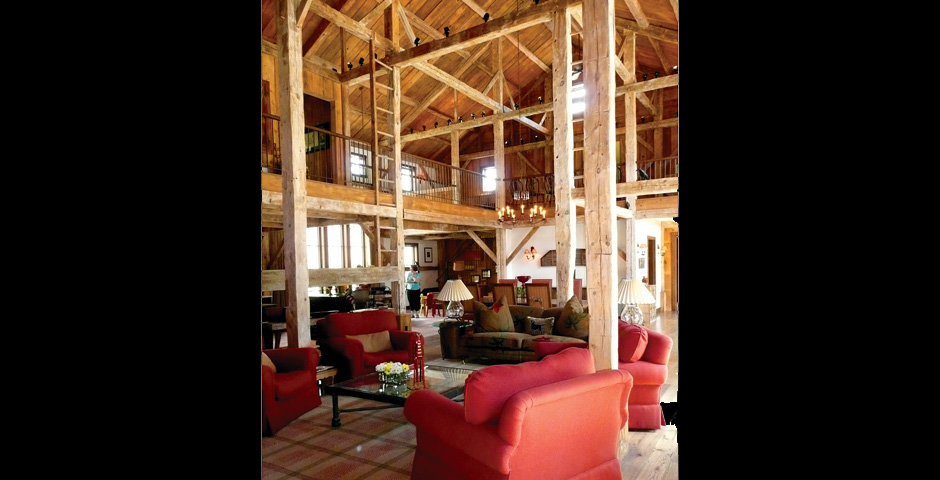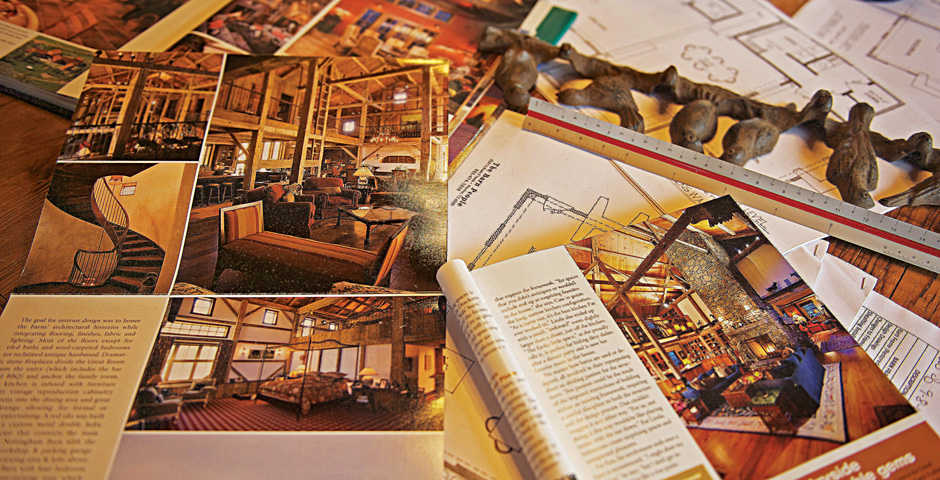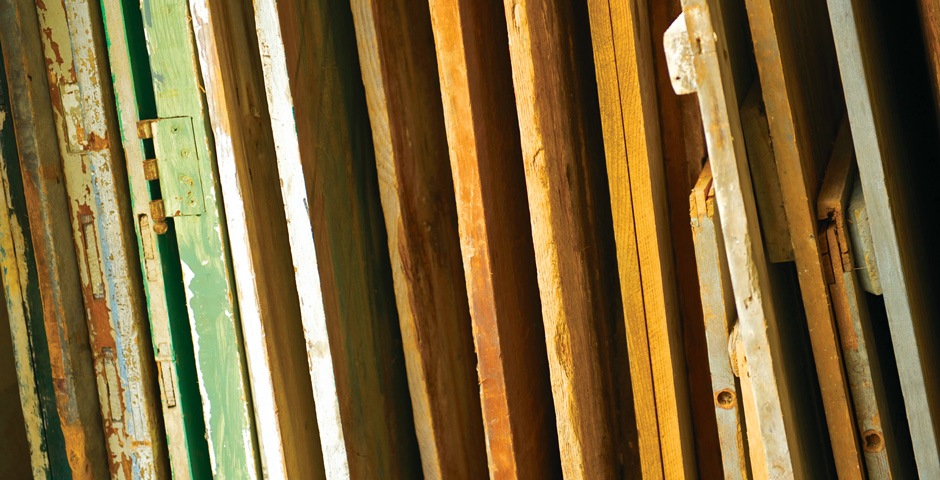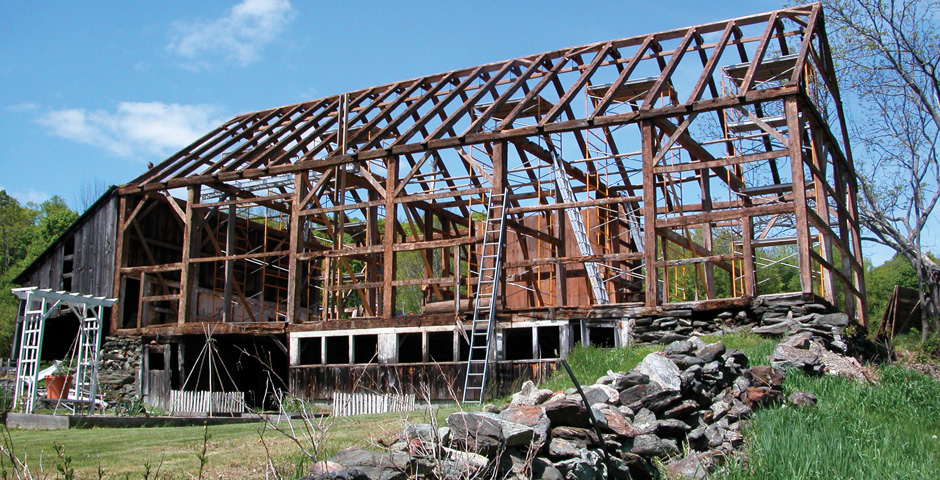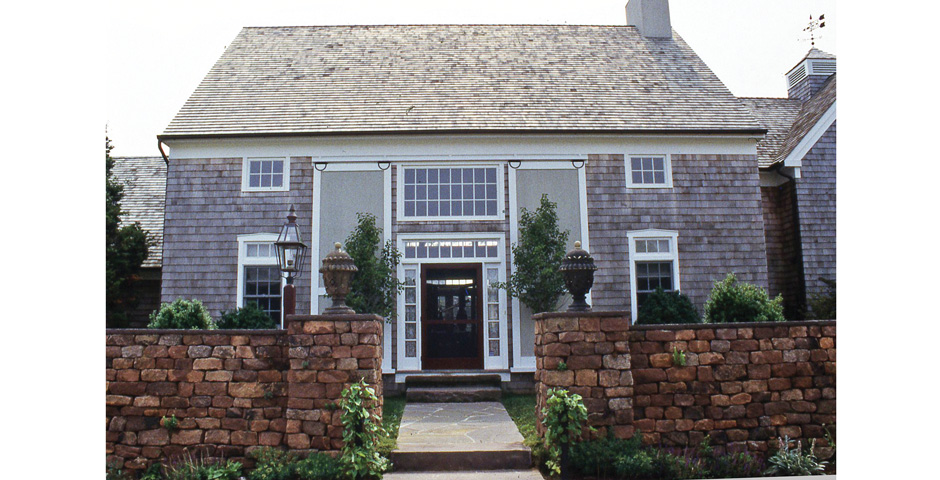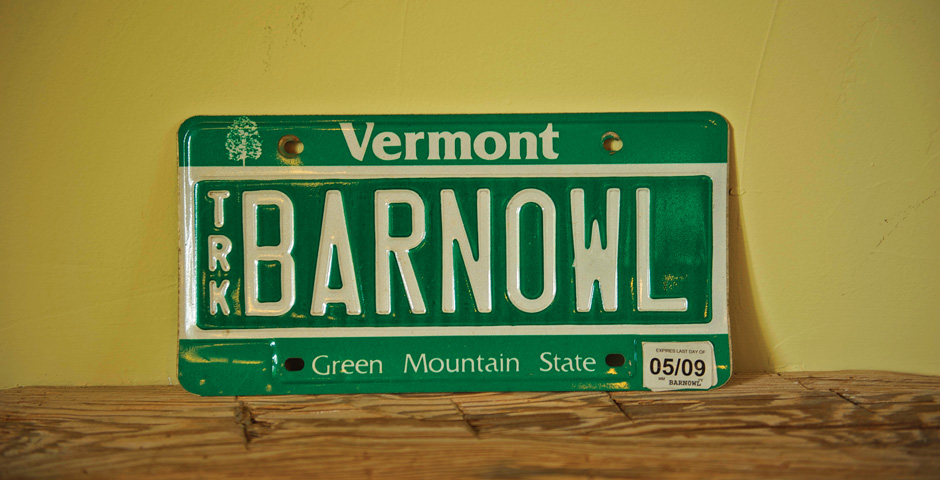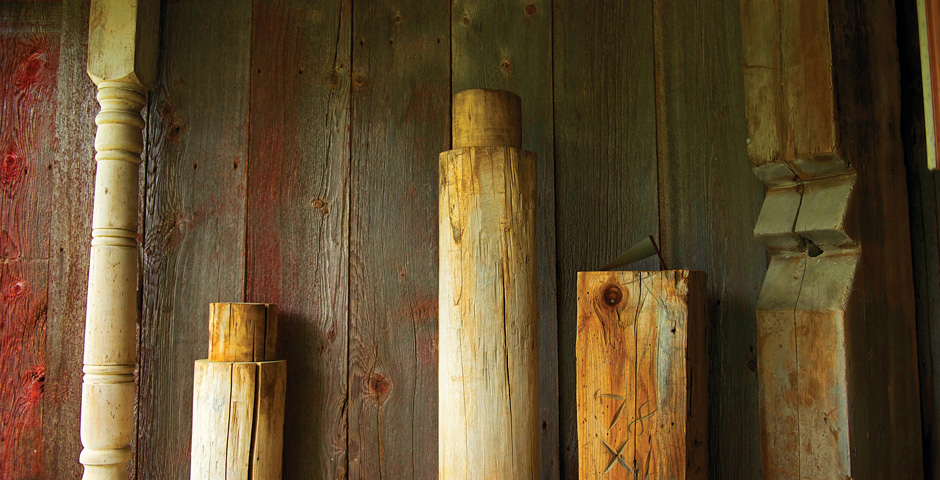In the mid 1800s there were over 34,000 farms in Vermont. But with few working farms remaining there are numerous barns and outbuildings no longer earning their keep. Many owners simply can’t afford their upkeep or to pay taxes and insurance on them, and the buildings slowly collapse.
In Windsor, Vermont, we visited Ken Epworth (above) and his company, The Barn People, in their cozy office located in–what else?–a barn. Ken and his crew rescue these elegant, yet crumbling structures and relocate and rebuild them all over America as homes, pool houses, studios, guesthouses–and yes, even a few barns.
“We are a small group of Vermont craftsman who have taken our many years as experienced carpenters and designers and applied them to the restoration of old barns,” Epworth told us. “Our guys love working out in a Vermont pasture scrambling around on some barn roof discovering forgotten secrets, looking for clues of origin and construction. Because the frame is modular and held together with wooden pegs, the timbers are not destroyed during dismantling. The wooden pegs are simply removed and the frame can then be taken apart piece by piece.
“Over the years we’ve found that the same people that took the barn down should be the people that put it back up. Each frame has its own idiosyncrasies.” Because it’s actually surprisingly inexpensive to ship a deconstructed building, an old Vermont cow barn could very easily end up being reconstructed in California or Florida. Epworth added, “Luckily, we love to travel.”
Epworth’s barns have been featured in Architectural Digest, The New York Times, The Wall Street Journal, and The Los Angeles Times, as well as on the PBS television series This Old House.
Who buys these barns? “Everyone from dot-com millionaires with their own jets to ordinary folks looking to build their dream home,” Epworth said. Although he asked us not to publish the names of his famous clients, he showed us projects that range from a Sun Valley, Idaho, house that was created out of nine barns and a covered bridge (which links the master bedroom to the rest of the house), to simple family-room additions.
Epworth’s advice to people who would like to live in a barn: “Be very careful about what you’re getting. There’s a reason we clean, treat, and restore every timber before we reuse it. Not every barn restorer goes to the trouble we do.”
Originally published Fall 2012


